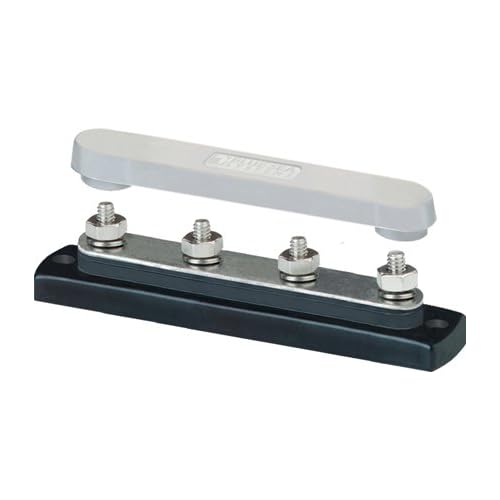landyacht318
Aug 30, 2014Explorer
Insert bare stranded wire, tighten screw.
I really dislike these types of connections.
In my experience the set screw needs to be retightened often, the copper gets all oxidized, the screws can loosen up and the wires fall out.
Yesterday I awoke glanced at my battery monitor and saw +323.6 amps. Not again! Argggghhhhhh!
Just pushing on the twisted pair wire from the shunt returned the amps to 3.4 where they should be, but of course Amps from full was thrown out until I reset the monitor.
After Sundown I removed the IPN Pro Remote, and did not have to unscrew the twisted pair wire coming from the Shunt, it just fell out.
I cut off the brown copper, restripped the wire and tinned it, then filed it down into a square that barely fit into the receptacles. I made it a bit dovetailed so that it cannot easily pull out. I used some Dielectric grease to help seal the connection, then re zeroed the meter after putting both twisted pair wires on the same screw on the Shunt.
The set screw device on the circuit board seems so fragile I understand why I did not really tighten the set screws so much the last time, and this time held the body of it with needle nose pliers while torquing the screws fairly tightly on the tinned wire.
I guess vibrations from my compressor fridge nearby could have contributed to or been the cause of the screws loosening. I did not want to try any loctite to keep them from loosening, and hope these measures I've taken prove to be lasting.
I'm not sure of an easy better way to attach small wires to circuit boards for the end user, but these set screw wire clamps are halfassery at its finest
In my experience the set screw needs to be retightened often, the copper gets all oxidized, the screws can loosen up and the wires fall out.
Yesterday I awoke glanced at my battery monitor and saw +323.6 amps. Not again! Argggghhhhhh!
Just pushing on the twisted pair wire from the shunt returned the amps to 3.4 where they should be, but of course Amps from full was thrown out until I reset the monitor.
After Sundown I removed the IPN Pro Remote, and did not have to unscrew the twisted pair wire coming from the Shunt, it just fell out.
I cut off the brown copper, restripped the wire and tinned it, then filed it down into a square that barely fit into the receptacles. I made it a bit dovetailed so that it cannot easily pull out. I used some Dielectric grease to help seal the connection, then re zeroed the meter after putting both twisted pair wires on the same screw on the Shunt.
The set screw device on the circuit board seems so fragile I understand why I did not really tighten the set screws so much the last time, and this time held the body of it with needle nose pliers while torquing the screws fairly tightly on the tinned wire.
I guess vibrations from my compressor fridge nearby could have contributed to or been the cause of the screws loosening. I did not want to try any loctite to keep them from loosening, and hope these measures I've taken prove to be lasting.
I'm not sure of an easy better way to attach small wires to circuit boards for the end user, but these set screw wire clamps are halfassery at its finest








